Your front door lockset is the first line of defense for your home’s security. This guide will help you identify the various parts of your lockset, troubleshoot common issues, and help you decide when you should call in a professional.
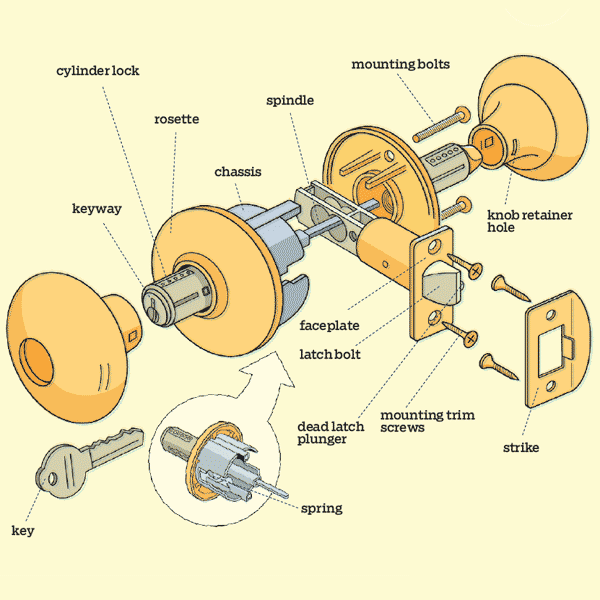
Here is a breakdown of each element of your lockset, and what steps you need to take to ensure it is working properly.
Cylinder Lock
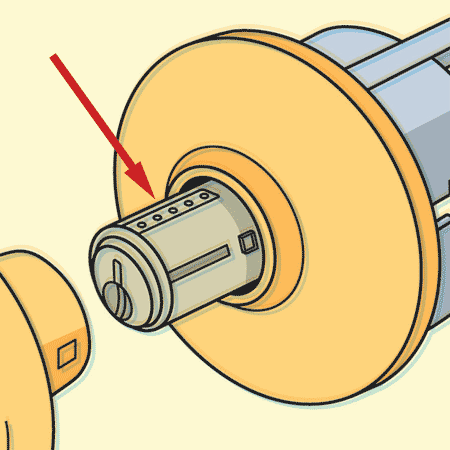
The cylinder lock is the heart of your front door lockset. It’s designed to turn only when the correct key is inserted, allowing the knob to retract the latch bolt.
Keyway
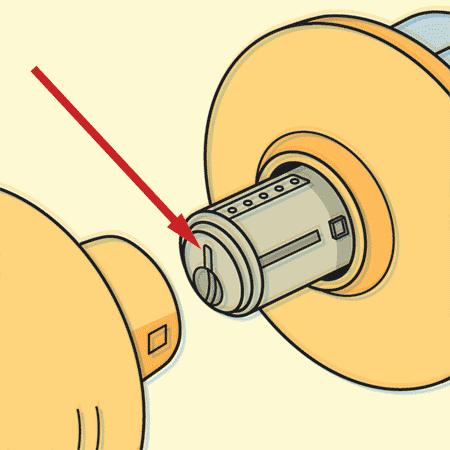
The keyway is the slot in the cylinder where you insert your key. Here are some maintenance tips for the keyway:
- Clean the keyway regularly with compressed air to remove dust and debris.
- Apply a dry lubricant like graphite powder or Teflon spray twice a year, ideally at the start of summer and winter.
- Insert the key and turn it several times to distribute the lubricant evenly.
- If the key doesn’t turn smoothly, use an electrical contact cleaner to degrease the keyway before lubricating.
- If the lock seizes up during these measures, call in a professional locksmith.
Key
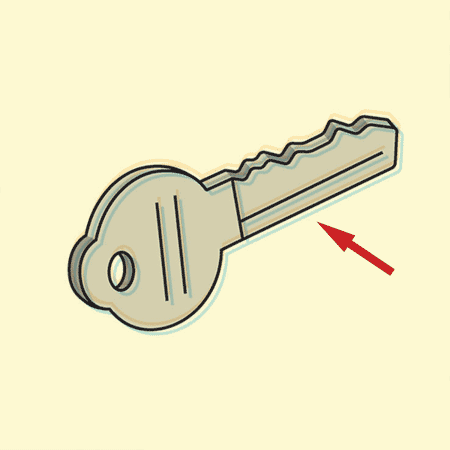
The key is designed with specific notches that align with spring-loaded pins inside the cylinder, allowing it to turn and unlock the door.
If a newly cut key doesn’t turn smoothly:
- Hold it over a candle flame to cover it in soot.
- Insert it into the lock, turn, and remove.
- Gently file down the shiny spots where the soot has rubbed off.
For older keys with worn peaks, you should consider replacing the entire lock for optimal security.
Rosette
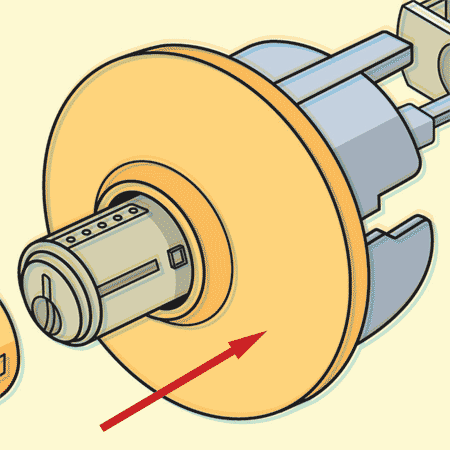
The rosette, also known as the rose or escutcheon, is the decorative cover that enhances the appearance of your lockset while protecting the internal mechanisms. If you notice your rosette becoming loose, simply tighten the mounting bolts to secure it back in place. A secure rosette is not just an attractive component, but also a vital part of your lockset’s defense against tampering.
Chassis
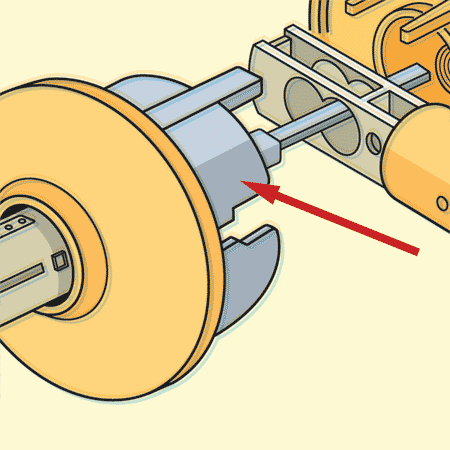
The chassis protects the lock mechanism from tampering if someone attempts to pry off the rosette. It’s an essential security feature that adds an extra layer of protection to your front door lockset. Its robust design ensures that the inner workings of your lock are not easily accessible to outsiders.
Mounting Bolts

Mounting bolts hold the chassis together and secure the entire lockset to your door. If you notice your lockset feeling loose or wobbly, check and tighten these bolts.
Knob Retainer Hole
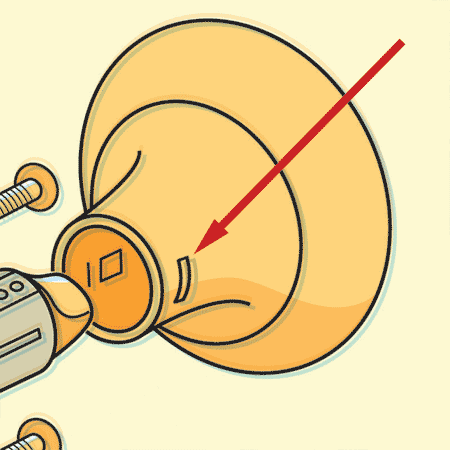
The knob retainer hole is a small opening that allows for easy removal of the doorknob when necessary. To remove the knob, insert a stiff wire into this hole and turn the key. This feature is particularly useful when you need to replace or repair internal components of the lockset.
Spring
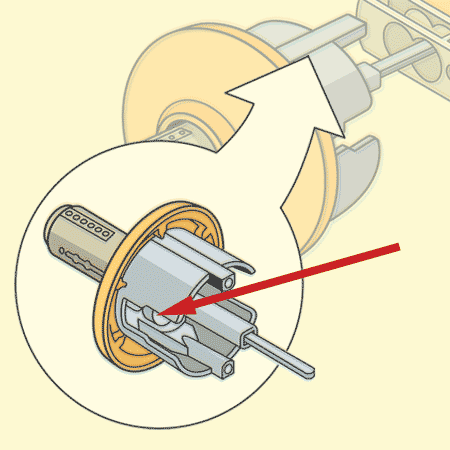
The spring in your lockset is responsible for returning the knobs to their neutral position after use. If you notice that your doorknob doesn’t spring back or feels loose, the spring may be broken. In such cases, you’ll need to either call a locksmith or replace the entire lockset. Timely repairs of the spring can prevent further damage to the lockset and keep your door operating smoothly.
Faceplate
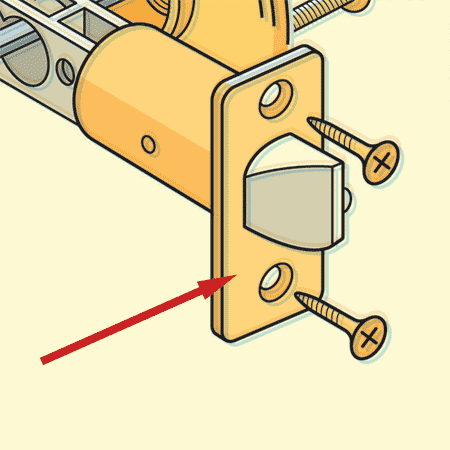
The faceplate secures the latch assembly to the mortise in your door. It’s an important component that ensures the proper alignment and functioning of your lockset. Ensure the faceplate is firmly attached; otherwise, your door may not latch correctly, compromising security.
Latch Bolt
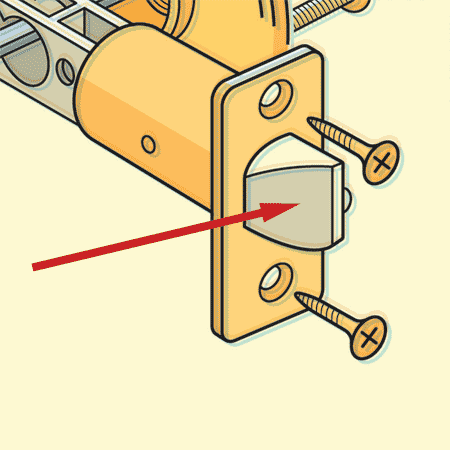
The latch bolt is the part of the lockset that extends into the door frame, keeping the door securely closed. It engages with the strike plate when the door is shut, preventing the door from swinging open. If you experience difficulty in closing the door, it may be due to misalignment, which can be easily fixed by adjusting the bolt’s position.
Spindle

The spindle connects the doorknobs on both sides of the door and retracts the latch bolt when turned. It’s a crucial component that translates the turning motion of the knob into the action of opening the door. Ensure the spindle is properly lubricated for smooth operation.
Dead Latch Plunger
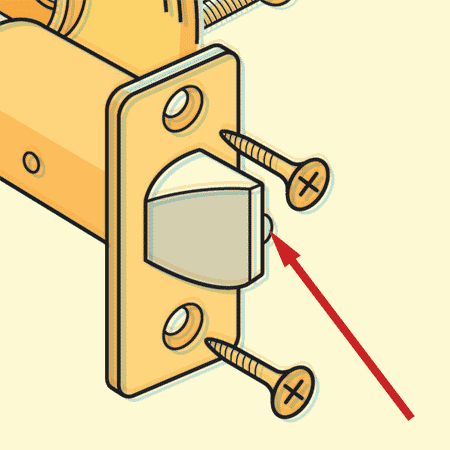
The dead latch plunger is a security feature that engages the latch bolt to prevent it from being pried open from the outside. This small but crucial component adds an extra layer of protection to your front door, making it more resistant to forced entry attempts. Check it regularly to ensure it’s still working correctly and is maintaining the locks’ security.
Mounting Trim Screws
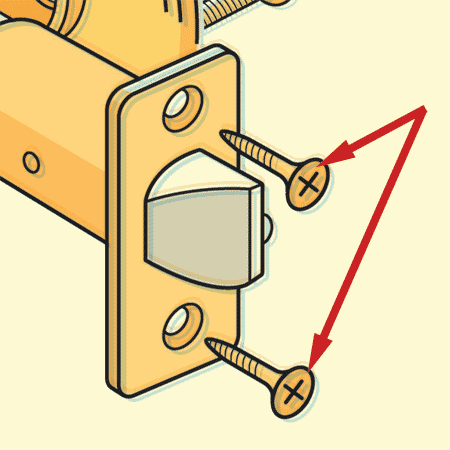
Mounting trim screws secure the faceplate to the door and the strike plate to the door jamb. If you notice these screws becoming loose or the holes getting stripped, here’s a quick fix:
- Carefully reinsert and tighten the screws.
- Remove the screws completely.
- Fill the stripped holes with wooden matchsticks and wood glue.
- Allow the glue to dry completely.
Strike Plate
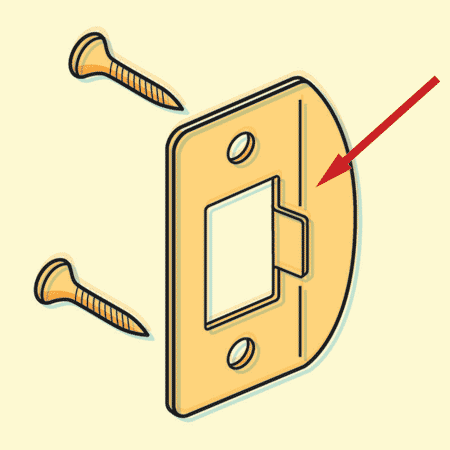
The strike plate reinforces the latch mortise in the door jamb, providing a secure point for the latch bolt to engage. If you’re experiencing issues with your latch not catching properly, try these solutions:
- Tighten the mounting screws of the strike plate.
- Reposition the strike plate for better alignment with the latch bolt.
- Replace the existing strike plate with an adjustable one for more precise alignment.
- If your door rattles when closed, you can slightly bend out the small tab on the strike plate opening to create a tighter fit.
Maintaining Your Front Door Lockset
Regular maintenance of your front door lockset not only ensures smooth operation but also extends its lifespan and improves overall security. Here are some additional tips for maintaining your front door lockset.
- Clean all visible parts of the lockset regularly with a mild soap solution and a soft cloth.
- Avoid using harsh chemicals or abrasive materials that could damage the finish.
- Check all screws and bolts periodically and tighten as needed.
- Test the lock mechanism regularly.
When To Replace Your Front-Door Lockset
While proper maintenance can extend the life of your lockset, there comes a time when replacement is necessary. Consider replacing your front-door lockset if:
- The lock mechanism frequently jams or sticks.
- You’ve experienced a break-in attempt.
- You’ve recently moved into a new home.
- The lockset shows visible signs of wear or damage.
- You want to upgrade to a more secure or technologically advanced system.
